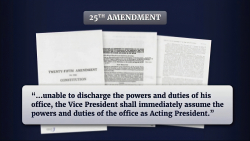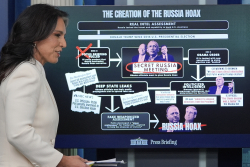The incident highlights a troubling pattern across the US Navy of increasingly poor seamanship.
The United States Navy remains one of the most sophisticated forces in the world. Yet, its capabilities have been declining over the years. Not only is there an awful shortage of ships and submarines, but the Navy has struggled with training and recruitment as well.
What’s more, the Navy’s ships and submarines are dangerously dependent on technology for navigation. In recent years, there has been a troubling array of near-misses and outright collisions between expensive and hard-to-replace Navy vessels.
A 2016 Naval Collision
Take, for instance, the 2016 collision between the Ohio-class nuclear missile submarine (SSBN) USS Louisiana (SSBN-743) and its escort vessel, the USNS Eagleview, in the busy waters of the Strait of Juan de Fuca off Washington State’s coastline. The collision unfolded around 6 pm Pacific Standard Time during routine operations.
Earlier that day, the Louisiana had surfaced to transfer a sailor for humanitarian reasons, after which the submarine planned to resume its course toward the Pacific Ocean.
The USNS Eagleview is a 250-foot offshore support vessel operated by the Military Sealift Command and crewed by contractors from Hornbeck Offshore Services. As the submarine maneuvered, the Eagleview unexpectedly steered toward it, thrusting into the Louisiana’s nose.
One of the Eagleview’s propellers tore into the submarine’s sonar dome, causing structural damage. Both vessels managed to return to port under their own power—the Louisiana to Kitsap Bangor in Washington and the Eagleview to Port Angeles—without any personnel injuries reported onboard.
A Report Heard ‘Round the Navy
After an exhaustive investigation into the August 18, 2016, incident between the Louisiana and the Eagleview was undertaken by commander, submarine force, US Pacific Fleet (COMSUBPAC), a confluence of errors was revealed. The Eagleview’s master, fatigued after 14 hours on duty, failed to switch the navigation system from “hold heading” mode to manual, leading the ship to veer uncontrollably toward the submarine.
As for Louisiana, the crew operated under the assumption that escort vessels would always yield, neglecting to monitor the developing close-quarters situation closely. The periscope was not continuously manned, communication breakdowns occurred, attempts to radio the Eagleview went unanswered, and the submarine did not notify escorts of its course changes.
These lapses echoed a 2011 near-miss involving the USS Kentucky, where similar complacency led to the captain’s relief. They also highlighted a troubling pattern across the US Navy of increasingly poor seamanship.
When all was said and done, USS Louisiana sustained damage to its forward starboard hull, sonar dome, hydrophone, and ballast tank—requiring dry dock repairs estimated at around $10 million and sidelining the important vessel for months thereafter.
No nuclear systems were compromised aboard the submarine as a result of the collision.
Damages
The Eagleview needed about $400,000 in fixes, which included replacing its propeller and rudder. Eagleview was in port for a month receiving repairs as a result of its collision with Louisiana.
In response, the investigation by COMSUBPAC recommended several procedural reviews, including working groups between the Navy, US Coast Guard, and submarine fleets to refine escort patrols. Lessons learned were disseminated across the 14-boat ballistic missile fleet, emphasizing fatigue management, communication, and vigilance. The Military Sealift Command was urged to pursue contractual recovery for damages.
By 2020, USS Louisiana was undergoing a major refueling overhaul at Puget Sound Naval Shipyard, extending its service life.
A Disturbing Pattern
The fact is that this incident was not the first (nor the last) of several instances. Most recently, the USS Connecticut, a key Seawolf-class submarine in America’s fleet, is reported to have crashed into an underwater mountain in the South China Sea.
Because of this incident, Connecticut was taken out of commission for years thereafter—leaving a key gap in America’s essential (but far too small) Seawolf-class submarine fleet.
There is a real problem with the Navy’s seamanship these days. It is only a matter of time before something catastrophic, akin to the kinds of accidents that once befell the Russian Navy’s submarine force in the chaotic years following the collapse of the Soviet Union and the end of the Cold War, occurs.
The collision between UNSN Eagleview and USS Louisiana is a warning for the kind of decline that has been allowed to fester within the Navy for far too long.
About the Author: Brandon J. Weichert
Brandon J. Weichert, a Senior National Security Editor at The National Interest as well as a contributor at Popular Mechanics, who consults regularly with various government institutions and private organizations on geopolitical issues. Weichert’s writings have appeared in multiple publications, including the Washington Times, National Review, The American Spectator, MSN, the Asia Times, and countless others. His books include Winning Space: How America Remains a Superpower, Biohacked: China’s Race to Control Life, and The Shadow War: Iran’s Quest for Supremacy. His newest book, A Disaster of Our Own Making: How the West Lost Ukraine is available for purchase wherever books are sold. He can be followed via Twitter @WeTheBrandon.
Image: DVIDS.
















